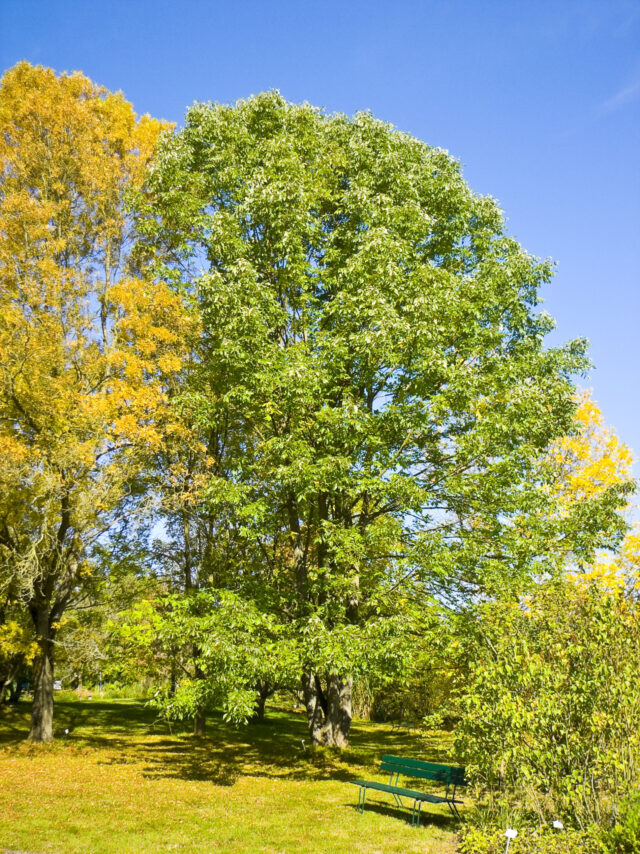
We know it. One may have grown in the backyard of our childhood home. It is a “nice tree.” It doesn’t have one single outstanding feature to capture our attention and associate it with a name. We know the lilac and magnolia, but our backyard tree may still be nameless. Let us get acquainted with the white or American ash, Fraxinus americana, a really “nice tree.”
What do Little Leaguers, King Arthur, and Bentwood chairs have in common? You may have guessed – ash is the connection. Ash wood is elastic, shock resistant, and strong. It is tough, yet bendable and lightweight. The unique characteristics of the wood have yielded a plethora of uses, including baseball bats, tennis racket frames, hockey sticks, polo mallets, spears, tool handles, oars, scythes, hayforks, plows, furniture, bowling alleys, church pews, and airplanes. Sometimes the wood has unique grain patterns which are used for veneers and interior finishing. As firewood, however, ash is mediocre. Also ash is not suitable for outdoor uses as it does not hold up in contact with damp ground. For the herbalist, a white ash leaf rubbed on a bee sting or mosquito bite supposedly relieves the itching. It does appear that ash has touched all of our lives.
According to Algonquian Indian folklore, an arrow shot into an ash tree created the human species. The Norsemen and Greeks have similar legends. Perhaps the stuff of legends has to do with the fact that most ashes are large trees and that their wood was associated with weapons and tools. The white ash, although nondescript in many respects, makes a large pleasantly shaped dominant feature on the landscape, whether in the natural environment or cultured. The white ash and other ashes worldwide must have touched the spirit of those early Indians, Norsemen, and Greeks.
About sixty species of ash are found worldwide in the North Temperate Zone. Each species has its own differentiating characteristics but all have certain traits in common. Ashes are related to olives, privet, lilacs, jasmine, Chionanthus, and forsythia. To be specific, the ashes belong to the olive family, Oleaceae, many of which are warm temperate or tropical species. In a sense, most ashes are north country cousins, lacking the petaled flowers, fragrance, and desirable fruits of other olive family members. The wood, however, does contain an oil similar to olive oil. White ash is a good coppicing species – it sprouts from the stumps of fallen trees. The roots of the cut trees regenerate shoots at a remarkable rate. Young fast growing trees provide the desired sapwood sought by most ash wood users. The tree also transplants easily and is pH and sun tolerant. Landscapers especially look to the white ash for fast growth in problem areas.
To distinguish white ash, Fraxinus americana, look for these tell-tale markers. The compound leaves are pinnate with five to nine (usually seven) wavy edged and stalked leaflets. The leaves are green above and whitish green downy surfaced beneath. The leaves are opposite each other on the stout twigs. Leaf scars are crescent-shaped to semicircular. The flowers are dioecious, with sexes on separate trees. The flowers are petalless and appear before the leaves. The fruit is a single-winged samara, one to two inches long.
The white ash covers hardiness zones three to nine and has done well in Europe, as few of our tree species have. The native distribution extends from Nova Scotia to Florida and west into Minnesota and Texas. The best growth is in well-drained, moist and loamy soil. It will exceed twenty feet in twenty years, rapid growth for a hardwood species. White ash in the virgin forest supposedly reached 175 feet. One of the largest presently is located in Palisades, New York, and is 95 feet with a trunk circumference of 25.3 feet.
